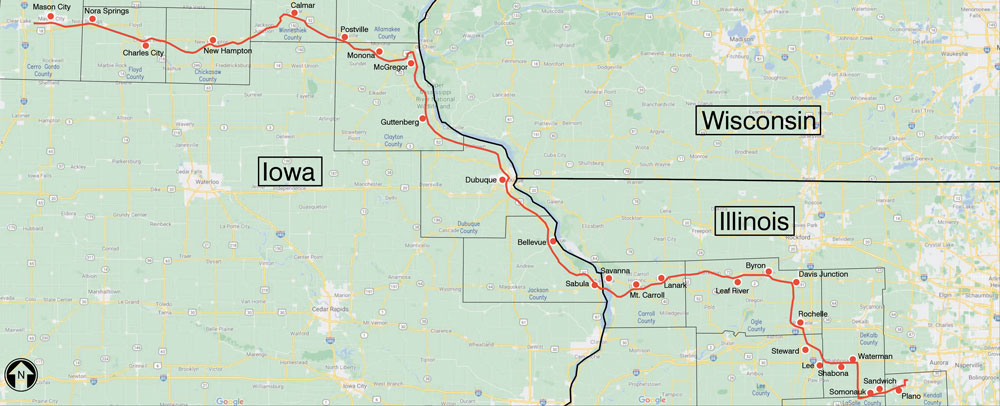High voltage DC line could transport megawatts
of wind energy to Midwest, if Exelon would allow it
My last two columns dwelt on Illinois’ electricity shortage and barriers to fixing the problem. One barrier is Springfield’s lethargy. The state could quickly install 111 megawatts of legislature-approved electricity storage; instead, construction will not start until 2025. The Senate’s proposed Grid Reliability Task Force (if approved by the House) might delay fixes. Then there is Exelon’s crippling of the Renewable Portfolio Standard which also kneecapped renewable energy installers needed for accelerated replacement of retired coal plants.
Electricity imports could also eliminate our shortage but require more cross-state grid interconnections and, eventually, a national “energy interstate” or macrogrid for moving large quantities of electricity from coast to coast. By moving low-cost electricity to high-cost urban markets, a macrogrid would return $2.5 dollars for every dollar invested and largely eliminate intermittent output of wind and solar (Ethan Howland, Herman Trabish). Intermittency is a local problem that long-distance transmission mostly solves. It is also one of the best ways to maintain the grid reliability during extreme weather (Michael Goggin).
The SOO Green Line, a high voltage DC (HVDC) line for transporting 2,000 megawatts of ultra-low cost wind from the Great Plains to Chicagoland, represents a macrogrid building block. SOO Green would be the first HVDC link between the Pennsylvania-New Jersey-Maryland Interconnection and the Midcontinent Independent System Operator’s wind-rich Prairie States and would almost triple the amount of electricity that could be transported across America’s two largest regional grids. Crucially, it will bury wires along Canadian Pacific railway tracks, the key for building a national macrogrid at lightning speed. SOO Green’s buried lines along railroads avoid time-devouring, eminent-domain lawsuits and would have allowed completion in 2024, not 2034. Finally, private investors are paying SOO’s $2.5 billion cost; utility customers will not pay a dime.
SOO Green would complement MISO’s Grain Belt Express, another HVDC line which will run from Western Kansas to central Illinois. With expected completion in 2026, it will import another 1,500 megawatts of wind power to Illinois. We would not face electricity shortages now had these two grids been completed this spring.
Lots of low-cost electricity, improved reliability, no transmission charges, 2,000 megawatts of “blackstart capacity” in case of grid failure, and a $2 billion construction project: SOO Green’s ideal, right? Wrong. First ComEd (Exelon’s subsidiary) charges customers for transmission of electricity across its wires. SOO Green encroaches on ComEd’s transmission revenues. Second, it erodes Exelon’s hegemony over Illinois electricity sales. Wind power is cheaper than nuclear power; so, SOO Green would cut into Exelon’s profits.
Exelon’s opposition to SOO Green is no surprise. So does PJM, Northern Illinois’ grid operator and the agent tying SOO Green in knots. Not surprising either: grid operators are nonprofits whose bills are paid by fees collected from member utilities and power generators. They are therefore solicitous of meeting the wants of powerful members, such as Exelon; it helps explain why grid operators “favor the interests of generators over customers” (Brien Sheahan).
Just as the North gets fruits and vegetables in the winter by importing them from Florida, Texas, and California, areas facing a peak energy shortage can also import electricity from areas with a surplus, and do so with HVDC cables buried along the same transportation corridors used to ship produce. But not if Exelon gets its way.
References
GheorghiuI, Iulia. 2019 (Mar 13). Independent developer proposes $2.5B underground transmission line to bring Iowa wind to PJM, MISO. Utility Dive; https://www.utilitydive.com/news/independent-developer-proposes-25b-underground-transmission-line-adding/550399/
Goggin, Michael. 2021 (Jul). Transmission Makes the Power System Resilient to Extreme Weather. Grid Strategies LLC;
Howland, Ethan. 2021 (Oct 19). Boosting transmission between East, West grids will lower costs: NREL. Utility Dive; https://www.utilitydive.com/news/transmission-east-west-seams-grids-lowers-costs-nrel-wind-solar/608475/
Sheahan, Brien J. 2022 (Aug 3). Why electricity is more expensive and less reliable. Utility Dive; https://www.utilitydive.com/news/electricity-restructuring-regulation-sheahan/628748/
Tomich, Jeffery. 2021 (Mar 26). Midwest transmission morass: A 100% clean power warning? E&E News; https://www.wind-watch.org/news/2021/03/26/midwest-transmission-morass-a-100-clean-power-warning/
Trabish, Herman. 2022 (May 3). The fight for a national clean energy transmission system emerges on three fronts. Utility Dive; https://www.utilitydive.com/news/the-fight-for-a-national-clean-energy-transmission-system-emerges-on-three/621720/



Recent Comments